ZStack Interpretation | After VMware’s shift to a subscription model, how can users choose virtualiz
The server virtualization market is facing its most significant disruptive change in over a decade, according to Gartner's "Global Server Virtualization Market Guide."
How Should Users Calculate Costs?
VMware's subscription model is not just a simple change in the purchasing method for users.
VMware has transitioned its product lines to a portfolio based on four major subscription packages, moving from perpetual licenses to 1/3/5-year subscriptions. The sales rules have also been adjusted under the subscription model, for example:
- Management: vCenter is no longer sold as a standalone product or component; it is bundled into each subscription package.
- Computing: Billing has changed from per CPU to per Core, with a minimum billing of 16 cores per CPU.
- Storage: vSAN has shifted from CPU-based licensing to raw capacity-based billing.
- Networking: In scenarios involving vCenter, vSphere, and NSX DataCenter, subscriptions are only available through VCF with NSX Firewall Add-on.
- Services: Services are bundled into subscription packages, and standalone service renewal is not supported after the perpetual license expires.
For users, calculating costs and measuring ROI has become a complex issue. So, what does the subscription model mean for users? ZStack product technology experts help users break down the costs, sharing a cost comparison before and after VMware's subscription model, ZStack product solutions, and successful case studies.
There are various paths for different VMware product combinations, including three main paths: Virtualization, Cloud, and HCI.
Virtualization Solution
This section will primarily interpret the Virtualization solution in virtualization scenarios.
From a scale perspective, small, medium-small, and medium-sized customers mainly use VMware's basic, standard, and enterprise editions of vSphere. VMware recommends subscription packages such as VVEP (vSphere Basic Edition), VVS (vSphere Standard Edition), and VVF (vSphere Enterprise Edition) for these users.
If these users choose the Virtualization solution, the ZStack ZSphere virtualization platform covers over 95% of VMware's virtual machine lifecycle management functions while offering unique features to further enhance operational efficiency. Additionally, the ZStack ZSphere virtualization platform supports seamless hot upgrades across versions, integrates security group-east-west firewall functions, and supports dynamic resource scheduling and resource reservation functions. Moreover, the ZStack ZSphere virtualization platform offers various value-added modules, such as bare metal, agentless backup, and continuous data protection, allowing users to freely choose to expand functionality.
In terms of product combinations, the ZStack ZSphere virtualization platform can be flexibly upgraded and expanded, supporting ZStack CMP multi-cloud management functions upwards and seamlessly connecting to ZStack distributed storage downwards, building a new generation of cloud infrastructure for users.
ZSphere + ZStack Ceph Solution
In addition to virtualization scenarios, small, medium-small, and medium-sized customers also use centralized or distributed storage products.
For vSphere + centralized storage, VMware offers subscription packages like VVS + centralized storage mode. If enterprise edition features are needed, VVEP + centralized storage can be used.
For vSphere + vSAN combinations, VMware offers subscription packages like VVF (with add-on modules for vSAN).
The ZStack ZSphere virtualization platform supports seamless integration with both distributed and centralized storage, enabling compute-storage separation and converged deployment. For the above two scenarios, two solutions are provided:
- ZStack ZSphere Virtualization Platform + Centralized Storage: One of the features of the ZStack ZSphere virtualization platform is its strong compatibility, allowing flexible integration with various centralized storage systems, masking differences in underlying storage array brands.
- ZSphere + ZStack Ceph: Users of vSphere + vSAN can also use ZSphere + ZStack Ceph. Notably, ZSphere integrates with ZStack distributed storage via vhost + RDMA technology, delivering excellent performance with 4K random reads reaching millions of IOPS and 4K random writes exceeding 840,000 IOPS.
ZStack ZSphere Virtualization Platform Understands Users Better
In terms of product experience, the ZStack ZSphere virtualization platform offers a user experience consistent with VMware virtualization, enabling intelligent unified operations, seamless smooth migration, and production-grade security and reliability.
1. Operational Methods and Habits: The ZStack ZSphere virtualization platform features a flexible UI layout, allowing users to adjust width and height freely, supports right-click operations on virtual machines, and maintains familiar concepts like port groups and distributed switches, ensuring ease of use and a smooth transition. The platform allows batch management of new virtual machines, batch resource management, and one-click report export, enhancing operational efficiency.
2. Compatibility and Product Reuse: The ZStack ZSphere virtualization platform is a pure software product, not tied to hardware sales, and is widely compatible with mainstream server manufacturers. It supports unified clustering across generations and models of CPUs, enabling multi-brand server reuse and protecting investments.
3. Seamless, Grey-Scale Upgrades: The ZStack ZSphere virtualization platform supports online hot upgrades across versions and provides grey-scale upgrade methods to ensure business reliability.
4. Unified Management: The ZStack ZSphere virtualization platform supports unified operations and management of virtual machines and bare metal, allowing batch management of hosts and all resources based on clusters, supporting batch creation of virtual machines, and providing a UI interface host command line management window without requiring out-of-band management.
5. High-Security Features: VMware's NSX components need to be purchased as separate modules, while the ZStack ZSphere virtualization platform inherently provides security group functions (east-west firewall) without requiring separate component or value-added module purchases, offering better cost-effectiveness.
The ZStack ZSphere virtualization platform aims to provide users with efficient, flexible, and secure virtualization management solutions, helping enterprises improve operational efficiency, reduce costs, and achieve continuous business development.


